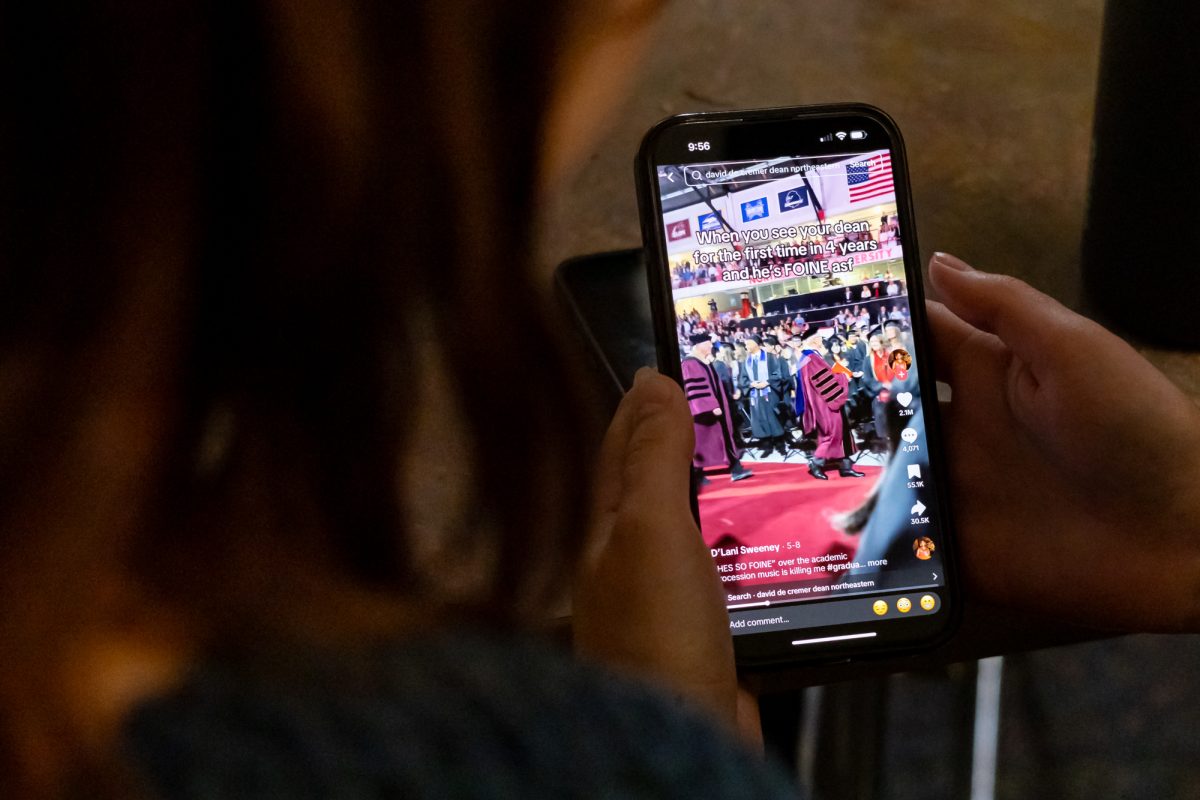
By Anthony Savvides, News Correspondent and Anna Marden, News Staff
As 750 million users worldwide continue to use Facebook, Google faces a challenge as it markets its new social networking site Google+. Last week, Google CEO Larry Page announced last week that Google+ gained 10 million users in its first two weeks, despite it being in a field test stage, with an invite-only policy.
Google+ allows people to divide friend groups into circles, “hang-out” in a video chat with multiple friends at a time and post thoughts or links in a stream similar to Facebook’s newsfeed. The new service is integrated into the toolbar on the top of the page for Gmail users. It’s not open to the public, but current users can invite friends to join the site by sending email invitations.
“[The invite-only model] strikes me that it’s almost a marketing scheme,” said assistant professor of journalism, Dan Kennedy. “It’s so easy to get an invite, it’s like a way to make people feel like they’re a part of the in-crowd when it’s actually easy to get in.”
Junior music industry major Tom Ponsart said he thinks the trial mode is like a popularity contest. He said he would join if he got an invite, but added that he isn’t too excited for the new site.
“I’ve never been into Google products. I have my [Gmail] sent to my Microsoft Outlook,” he said. “I haven’t checked [Google+] out, but I’ve never been gushing over Google products like everyone else has.”
Kennedy has joined Google+, but he admitted he hasn’t used the site yet, because not many others are using it. Julie Hershkowitz, a sports management graduate student, said she feels the same.
“Why would I use [Google+] when I already have Facebook?” said Hershkowitz. “So many of my friends aren’t on it. Everything about it confuses me.”
Middler nursing major Jennifer Beaton said she doesn’t use the site much for the same reason, but she does have optimism for its future.
“I think if everyone began switching over to Google+ instead of Facebook I would [use it more]. It could be the same kind of transition as MySpace to Facebook,” Beaton said. “I like that it’s sort of like starting over, I can choose who I really want to add. It’s like Facebook, but more selective.”
Kennedy said he thinks it’s a possibility that people might leave Facebook for Google+ if most people migrate from Facebook, in part because of its easy integration with other popular Google products. Although, he said he’s wary of people spending so much time on Google sites.
“It could be problematic to turn over so much of your online life to one online company [because] you’re giving them control,” he said. “Facebook has had some problems keeping private people’s information private, Google has had some problems keeping information private. When you turn over private information about yourself to private corporations, in some ways it becomes not yours.”
Kennedy, an avid Twitter user, said he likes Google+ circles features, because its an easy way to privately divide friends into separate groups.
“One thing that I really like … [is the] fact that [Google+] uses the Twitter model instead of the Facebook model where people can follow you and you don’t have to follow them back,” Kennedy said.
The new platform is still fresh, and it will take time for people to become accustomed to its interface. In today’s market, such rapid growth is no easy task, Murakami said.
Google+ was carefully crafted, adopting signature characteristics from across the board in an attempt to create a social superpower. Features like Twitter and Tumblr’s micro blogging, Facebook’s newsfeed, chat and lists have all been incorporated into Google+. They appear in a new format as a stream, with video conference hangouts and circles of friends.
While responses to Google+ have been mixed, the feedback is much more positive than it was for Google Buzz, which was Google’s last attempt at building a social component to its online empire. Google Buzz launched in February 2010, but failed to really take off with users, in part because it automatically enrolled existing Gmail users. Another Google product called Wave, an interface between emails, wikis, social networking and other online tools, also recently failed because of low user numbers.
“At the time, [Google Buzz and Wave] were disappointments. Using Google+, the +1 button and other tools make sense. If it didn’t make sense at the time, I think they do now, in the big picture,” said Hiroki Murakami, head of social media marketing for SignedOn, a start-up company based in Boston.
Murakami wonders if Google+ will catch on with a general audience once field trial has ended. With a new interface comes a clean slate – the advertisements and third-party applications that clutter Facebook are notably absent.
“The rate that Google+ has been adopting users, both from Facebook and otherwise, is astonishing,” Murakami said. “This is a new era for Google, with a new flagship product. It will open up a new business share against other major tech companies. I think it’s going to give Facebook a run for its money once its up and running.”








